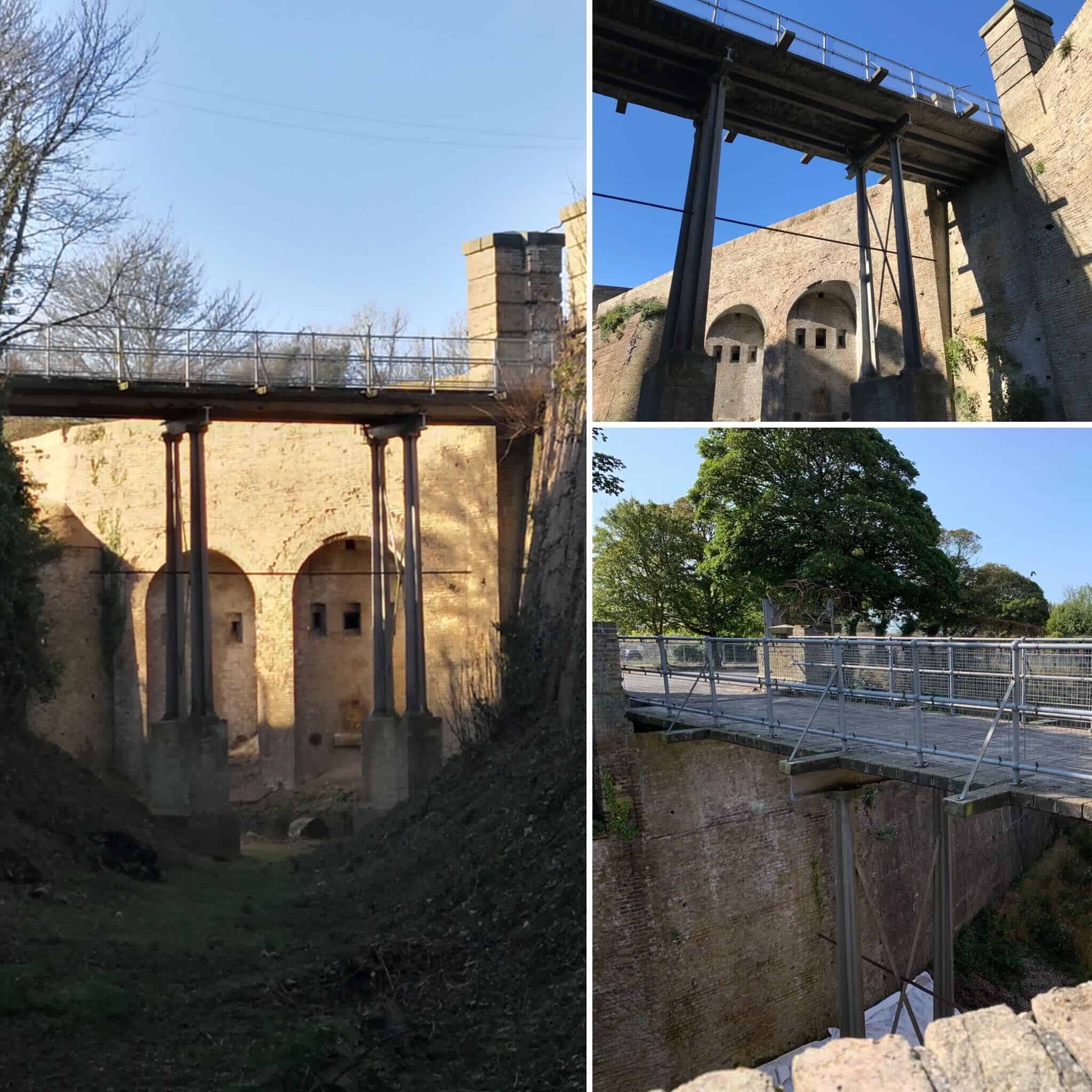Fort Burgoyne, Dover – Update

Fort Burgoyne, Dover – Update
LEP are delighted to have started work on site for the next phase of works at Fort Burgoyne, Dover.
Fort History
Fort Burgoyne is a Scheduled Ancient Monument situated just north of Dover Castle. The complex comprises a variety of buildings, defence structures and outworks that are centered around a large open parade ground. Originally known as Castle Hill Fort until 1864, it is the largest Royal Commission initiated land fort in Kent and typical of the ‘polygonal’ Palmerston design from the (1861-1873). The fort is surprisingly well-preserved, despite numerous modifications since construction was started in 1861. Much of these modifications reflect alterations required due to advancements in the technology of warfare since its completion in 1873, and its active use during both World Wars.
Fort Burgoyne and its immediate surroundings are of significant archaeological and historical interest, especially in its context to the 19th and 20th century elements of nearby Dover Castle. Although the fort’s history is relatively short, it was designated a Scheduled Ancient Monument in 1962, due to its survival, condition and rarity.
The Land Trust
In 2014, The Land Trust acquired the site and set about the careful process of stabilising the structures, with a vision to open the site to the public. Lee Evans Partnership was thrilled to be asked in 2018 to assist The Land Trust in this task and have been working closely with them since.
The Land Trust, an independent charity, is leading the way in establishing new, sustainable approaches to the management of open spaces alongside local communities. Their vision is ‘to improve the quality of people’s lives by creating, improving and maintaining sustainable, high quality green spaces that deliver environmental, social and economic benefits’.
Works Completed to Date
A programme of stabilisation and conservation works has now been identified which, in close consultation with Historic England, will create a restored and safe environment for those visiting this site in the future, whilst sympathetically conserving the important fabric of the structure.
Earlier this year, the first phase of works was successfully completed, which included stabilisation of structures in the West Battery, including the Gatehouse and works to replace the roof of the Gun Shed.
Access Bridge Overhaul
September 2020 saw work start on the bridge over the ditch which encircles the site. This provides the only access to the fort, and as such is a key structure. The bridge structure was built between in 1866/7 and was carried on four large cast-iron bridge piers, standing on brick and York-stone bases. The iron work for the existing bridge was completed by a local ironmongers Smyth & Co Phoneix Iron Works. The inner third of the bridge was designed as a drawbridge.
During the mid-to-late 20th Century the deck of the bridge was replaced, which may have been the same time as the drawbridge was removed. New steels were laid over the cast iron structure and in turn precast concrete planks were laid over these, upon which a bitumen macadam surface was applied. Unfortunately, over the years water has penetrated through the deck causing rust to occur in the steels below. This, combined with the deterioration of the deck itself, has resulted in the weight restriction of the bridge being reduced to 7.5 tonnes. Unless the condition of the bridge is addressed, the damage would get progressively worse with more loss of existing fabric. This would also limit access to the main site which will restrict future development of the fort.
When approaching an issue such as this, the first place to start is to understand the structure and the significance of the site. Being a Scheduled Ancient Monument, the main periods of evolution of the site are also significant to the special nature of the site. Any intervention needs to be carefully explored and justified, while physical intervention is often needed to protect its future. This should always be in a thoughtful and methodical manner to ensure impact is limited.
Working closely with Historic England and Conservation Accredited engineers at CTP Consulting Engineers, a solution has been developed which will allow the existing bridge to retain the 20th Century concrete deck, with the steel below repaired. This will allow a new cast in-situ concrete deck to be carefully applied over the top, providing a rigid and water proof deck, increasing its weight capacity and extending and protecting the life of the structure.
The work is scheduled to take a few months, and is due for completion during December 2020.
The Main Fort Works, and Beyond
Stabilisation work in the main fort has commenced, although not at full capacity due to the limited access via the existing bridge. After the works to the bridge are complete, better access will be afforded, allowing for ‘full steam ahead’ with the key repairs and stabilisation work of the main fort structure.
Watch this space for more updates.



